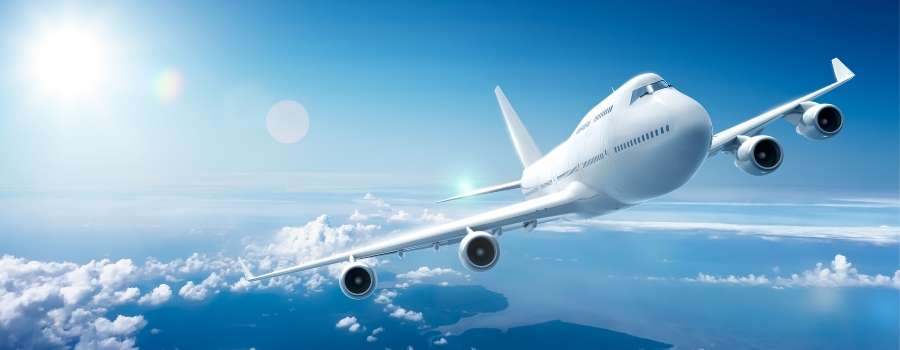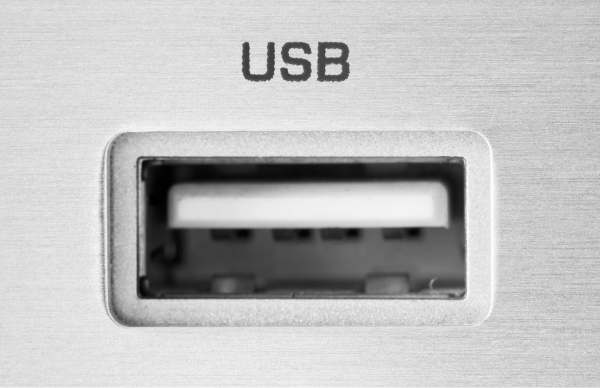Solar chargers are a great way to keep your devices powered up while on the go, but there are some things you need to know before you try to take one on a plane.
It’s important to note that you should always check TSA’s official site before your flight…and I mean, a few minutes before you leave the airport in order to make sure. The rules are always changing and, while the rules on chargers have been fairly stagnant for the last several years, it’s still a good idea to check.

Can You Take A Solar Charger On A Plane?
While solar chargers are generally permitted on airplanes, there are limitations and rules as to what kinds of chargers are allowed on planes. For instance, FAA rules state you must bring chargers with lithium-ion batteries in carry-on luggage rather than checked baggage.
This rule is in place because lithium-ion batteries are a fire hazard if damaged. Since checked luggage is handled by multiple people throughout the loading process, it is more likely to be damaged than luggage you take on the aircraft. Keeping your lithium-ion battery in your carry-on luggage helps to prevent fires and keep everyone on the plane safe.
If your lithium-ion battery is damaged, it won’t be allowed on the plane (and you should probably get rid of it anyway, as it poses a fire danger to you as well).
Many mobile solar devices sold on the market use lithium-ion batteries, so it’s important to keep this rule in mind. However, there are plenty of solar chargers that depend solely on the sun to charge devices. If your solar charger doesn’t have a battery, you can take it on a plane without worry.
I’ve written an article about various batteries used in solar gear, you can check that out here.
Do Planes Limit The mAh Solar Chargers Can Have Onboard?
In general, there are regulations on the number of milliamps per hour (mAh) a solar charger with a battery is allowed to have onboard a plane. However, the regulations don’t specifically mention the number of mAh that’s allowed.
Instead, the FAA has limitations on the watt-hours (Wh) a lithium-ion battery is allowed to have. The Wh of a battery expresses the energy amount and storage capacity of a battery.
On the other hand, mAh expresses the charging capacity of a battery. While both watt-hours and mAh are ways to measure battery capacity, Wh is more commonly used as a standardized measurement of a battery’s capacity to store energy.
Batteries with up to 100 Wh are allowed on planes. However, if your solar charger battery has more than 100 Wh, you’ll need special permission before bringing it on the plane. Even if you receive permission, you’ll only be allowed to bring batteries with up to 160 Wh on the plane.
According to Flux Chargers, there’s a simple formula for finding the Wh of your solar charger battery:
Wh = mAh x V / 1,000
What Does Wh = mAh x V / 1,000 Mean?
To find out how many Wh your solar charger has, multiply the milliamps per hour by the voltage, then divide that number by 1,000.
So if your lithium-ion battery has a voltage of 3.7 (as most solar chargers do) and an mAh of 30,000 mAh, your calculations would look like this:
30,000 x 3.7 = 111,000
111,000 / 1,000 = 111
This charger, then, would have a Wh of 111…making it too large to bring onto the plane without prior permission.
However, most solar chargers come in under the 100 Wh mark. For example, the X-Dragon Portable Solar Charger can charge a laptop and external battery at 40Wh.
Many solar chargers are even smaller than this, so while you should confirm the Wh of your solar charger before taking it on a plane, there’s a good chance it’ll be small enough.
If your solar charger is over 100 Wh, and especially over the 160 Wh mark, it may be too cumbersome to conveniently bring on a plane. These large solar chargers require multiple solar panels to create such a large amount of power.
Because of that, they may take up valuable space in your carry-on luggage. It may be best to leave these large chargers at home or find an alternate way to bring them to your destination.

Can You Charge A Solar Charger With A Plane’s Built-in USB Port?
If your solar charger has a battery pack, you may connect the battery to a plane’s built-in USB port. However, if you only rely on sunlight to charge your gear without a battery, it won’t work. It’s also vital to check that your charger’s battery is compatible with the USB charger you’re using.
While it may be possible to charge your solar charger on the plane, your best bet is to charge your solar charger before you get to the airport. That way, you’ll be able to charge your devices no matter what happens….and, let’s face it, plugs on airplanes are not always the most reliable.
If you need to charge your phone on a plane and your solar charger battery is dead, the best option is to bring a phone charging cable to plug into the built-in USB port in the plane. While many solar chargers are designed to be small to make them easy to transport, they are still significantly bulkier than a simple charging cable.
The last thing you want is to bother the person sitting next to you on the plane by taking up space with your solar charger, so using a regular charging cable may be a better choice.
Another option is to purchase a solar power bank. These power banks work similarly to solar chargers in that they utilize the sun to charge your devices, but they can more easily be plugged into USB ports. They also tend to be smaller, making them easier to take on a plane.
Solar power banks look just like normal power banks, except they have a single solar panel on one side. They don’t harness the sun’s energy as efficiently as solar chargers, so plugging them in is typically necessary.
These power banks will charge when exposed to sunlight, but it can take them a long time to achieve a full charge. Plugging them into an outlet when you have the chance…like using the built-in USB port, if equipped…will make the process much quicker and more efficient.
Are There Solar Chargers That Are Allowed In The Cargo Area But Not In The Cabin?
There are solar chargers that are allowed in the cargo area but not in the cabin of the aircraft. Some airlines may have restrictions on the size, type, and number of lithium-ion batteries that can be carried in the cabin, but may allow larger or more batteries to be transported in the cargo area, as long as they are properly packaged and labeled.
It’s important to check with the airline and the manufacturer of the solar charger before traveling to ensure that it is allowed in the cargo area and that it is properly packaged. Keep in mind that regulations regarding lithium-ion batteries may vary depending on the country or region, so it’s always best to check with the specific airline you’re traveling with.
And remember, the rules about portable chargers can change nearly without warning, so it’s always best to check the airline, the airports you’ll be flying out of, and TSA’s (or non-US equivalent) current guidelines.
Can You Use A Solar Charger Once The Plane Is In Flight?
It is not recommended to use a solar charger to power your devices while in flight. Most commercial airplanes are not equipped with solar panels, and therefore would not be able to generate the power needed to charge a device using a solar charger. Additionally, the use of personal electronic devices is typically prohibited during takeoff and landing, and may be restricted during travel as well. Therefore, it would not be possible to use a solar charger during these times.
Even if the use of electronic devices were permitted during a flight, solar chargers typically require direct sunlight to generate enough power to charge a device. The windows on aircraft do not provide enough direct sunlight to effectively charge a device using a solar charger. Additionally, the altitude and movement would also affect the amount of sunlight reaching the solar charger, making it even less effective.
It is also worth mentioning that most solar chargers are not designed for use in an airplane. They are intended for use outdoors or in well-lit indoor spaces, and may not be able to withstand the conditions found in an airplane, such as changes in temperature and pressure.
Final Thoughts
Solar chargers are a great way to stay powered up while on the go, and with a little bit of planning, you can easily bring one on a plane.
However, if your solar charger is over 100 Wh or 160Wh, it may be too cumbersome to conveniently bring on a plane. These large solar chargers require multiple solar panels to create such a large amount of power.
Because of that, they may take up valuable space in your carry-on luggage. It may be best to leave these large chargers at home or find an alternate way to bring them to your destination.
